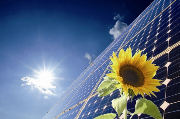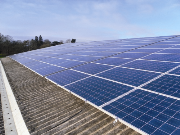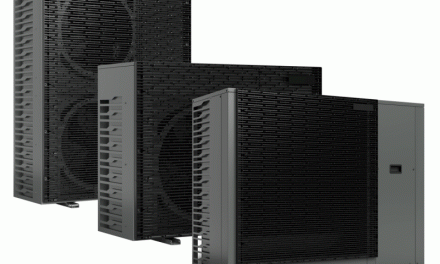 Solar panels are supposed to be a product of the future, but they are currently caught up in an old battle between China and the US.
Solar panels are supposed to be a product of the future, but they are currently caught up in an old battle between China and the US.
In the second of his series of comment pieces on the solar industry, – James Woollard, managing director of Evergreen PV, asks the question – is there a potential trade war now that the US have slapped tariffs on Chinese made solar panels?
Some analysts are warning of a trade war after the US slapped tariffs on Chinese made solar panels, but are they already in one?
For a number of years US energy companies have complained they can’t compete with the vast amount of ‘cheap’ solar energy products that are coming from China and flooding the US and other world markets. Companies facing financial troubles or even bankruptcy are looking for a scapegoat, and many of them are pointing at China.
In response, the US Department of Commerce is launching an investigation into these practices. They announced recently the preliminary decision to impose ‘anti-dumping’ duties of 31.22% on crystalline silicon photovoltaic cells imported from China. This anti-dumping investigation has led commerce to explore the option of levying duty fees, or tariffs, against the Chinese made solar goods.
For me it’s an odd industry for the US administration to target, as all those Chinese subsidies have made solar roughly price competitive as an energy source for the first time, something the supposedly environmentally minded administration would approve of. But now the administration want to make it more expensive.
Just last year, China sold more than $3.1bn worth of solar cells and panels in the US so I guess I can see why it is referred to as a ‘dump.’
Obviously the Chinese government is protesting against the US anti-dumping tariffs on their solar panels, calling them unfair and damaging to producers and consumers. A statement from the Chinese Ministry of Commerce said Washington’s decision sent a ‘negative signal’ about trade protectionism.
It’s fair to say the Chinese aren’t best pleased, whilst many US firms have kept pretty quiet, and for the rest of us, well, we just want everyone to get along!
Only recently the Solar Energy Industries Association (SEIA), the national trade association representing companies across the solar value chain, released a statement saying that the two parties must immediately work together towards a ‘mutually satisfactory resolution.’
China-based solar firms, however, have been finding ways to avoid paying the tariff such as transferring solar orders to Taiwan.
Taiwan-based solar cell makers have been experiencing rising capacity utilisation rates but indicated that orders from China-based firms often have unprofitably low quotes. China obviously doesn’t want to give up on the US market, because it is one of the fastest growing solar markets in the world, but the US Department of Commerce aren’t making it easy.
This isn’t the first time commerce has threatened to impose such tariffs, or indeed carried them out. Protectionism is always controversial, and in today’s global economy it’s not always easy to know if one country’s tariffs might not also harm companies within that same country’s borders. For example, some US energy companies that use Chinese made solar parts might stand to lose profits if they have to buy them at higher margins.
Following the announcement of the tariffs, Beijing mounted a spirited response, with officials accusing Washington of illegally helping its domestic industry and Chinese solar companies teaming up to fight the levies.
At the end of May China’s Commerce Ministry said in a brief statement that its investigations of six clean energy projects in five US states had uncovered violations of international trade law, although wouldn’t go into further details.
The chief executives of four major Chinese solar power equipment companies then announced that they had allied to fight Washington’s allegations, saying the Chinese industry is beneficial to the US. The alliance said US consumer’s benefit from the lower prices that result from the industry’s concentration and competitiveness.
 Chinese manufacturers shipped nearly half the world’s solar panel’s last year, representing more than 10,900MW, while the US supplied just three percent, or about 780MW. US policy isn’t the only challenge for China’s solar industry. A study published last year by three scholars at George Washington University estimated that Chinese companies will be able to make 38% more product than they can sell this year and predicted that the question of whether Chinese supply and demand can come into balance will depend on the bite of US import policy and installation of the equipment in China.
Chinese manufacturers shipped nearly half the world’s solar panel’s last year, representing more than 10,900MW, while the US supplied just three percent, or about 780MW. US policy isn’t the only challenge for China’s solar industry. A study published last year by three scholars at George Washington University estimated that Chinese companies will be able to make 38% more product than they can sell this year and predicted that the question of whether Chinese supply and demand can come into balance will depend on the bite of US import policy and installation of the equipment in China.
The way I see it, is that the US market even with added costs would survive, as it is currently in a state of boom. A report prepared by GTM Research and the Solar Energy Industries Association showed that in the last quarter the US installed 506MW of photovoltaic panels – the second most number of quarterly installations ever and an 85% spike from the first quarter of 2011. But more importantly the developers of projects have good margins and can afford to cut back on margins, if needed to. The same cannot be said however for the Chinese who already have deeply cut margins.
Furthermore, and adding to China’s growing headache, a couple of weeks ago Solarworld AG (SWV), Germany’s biggest solar panel maker, announced plans to file an ‘anti-dumping’ case against Chinese competitors as part of a group of European manufacturers. Apparently they want to submit the case in Europe as soon as possible.
The sad part is that China has done a fantastic job with making solar a viable energy source for the future, and they do produce some very high quality products.
If the tariffs go through, Chinese companies will be left to either raise their prices in hopes of turning a (now lowered) profit, or as I’ve already mentioned, move their manufacturing centres outside of China to dodge the tariffs.
Whether an energy company in America is smiling or frowning about these potential tariffs depends greatly upon where they sit on the solar supply chain. The people who shape steel and silicon into panels might be happy, but the people who actually install the finished panels onto rooftops, for example, might be less so.
I am optimistic for China and I think they can prevent the tariff from hurting them too much. Hopefully we can all work together – China, the US, Europe and everybody else, preventing this from becoming any more of a trade war, and instead a war against reliance on carbon-based fuels.





